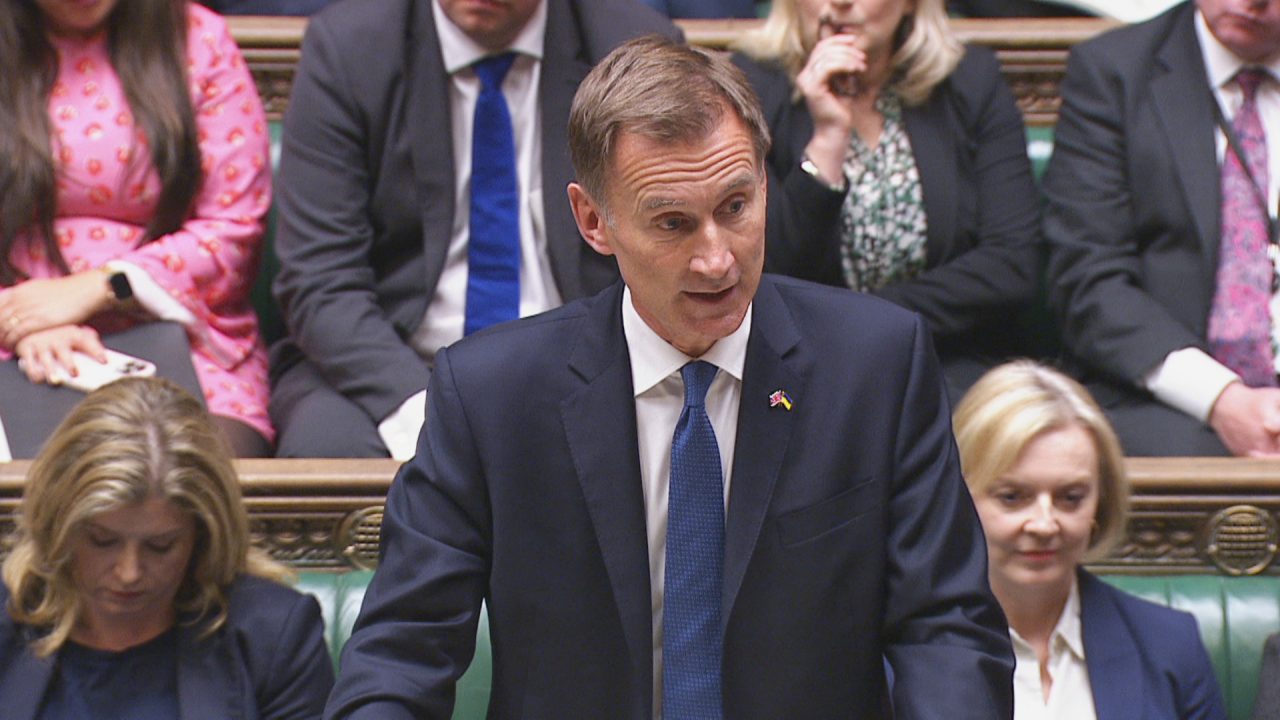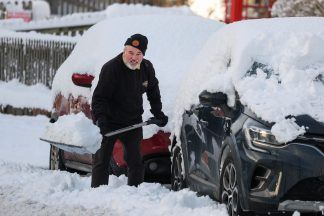There does not have to be a general election until December 2024. The outcome, whenever it comes, is likely to be determined by the fallout from the decisions taken by the chancellor in his budget, due a week today.
The management of the cost-of-living crisis is the only issue that will dominate the rest of this year, the whole of next year and the year after that.
Rishi Sunak presides over a country with a palpable sense of worry about what lies ahead and anger that once again people are carrying the economic can for problems not of their creation.
It is already clear that austerity is coming back with a vengeance. The PM and his chancellor, Jeremy Hunt, are discussing the balance of spending cuts against tax rises.
It may be 50/50, it might be some other split. Whatever it is, spending is set to be cut further after a decade of cuts following the financial crash of 2008.
What do we know so far?
Technically nothing, but if we bring together what look like nuggets placed by government sources, the picture is clear.
Income tax and national insurance rates look set to remain the same.
Corporation tax looks set to rise and the freeze on tax allowances and thresholds, frozen until 2025, look set to be extended for a further two years.
The windfall tax looks set to be increased and extended to help raise £40bn in the coming years.
A further freeze in the lifetime allowance for pension pots (there are big tax implications if the allowance is breached) and a freeze in the inheritance tax threshold will further enrage some core Tory voters.
The triple lock on pensions looks set to be honoured, which means the state pension rising by 10.1% next April. And benefits look set to be increased by that amount too. The combined bill for these two announcements will be £11bn.
The funding hole the UK Government will need to plug is of the order of £50bn. Assuming half of that figure is covered by tax rises, the implications for spending outwith health could be dire.
If the defence budget does not eventually hit 3% of GDP, you could see the defence secretary, Ben Wallace, quit.
Cuts to services in England that are devolved in Scotland would see a commensurate cut here through the application of the Barnett formula to the Scottish block grant.
However inventive the government plans to be, austerity will be back, for there is simply no way they can balance the books unless they plug the entire deficit by tax rises, something they would regard as a political non-starter.
Next Thursday’s announcement might not say anything specific about public sector pay, but well-placed Whitehall sources suggest future increases of 2% are being baked into spending assumptions.
Given tabled awards of 5% are leading to ballots and indeed actual strikes, then the 2% figure almost guarantees that the current unrest will not be a one-off in a particularly bad year. The strife of 2022 looks set to continue.
Things can only get better. That was the Labour mantra in 1997. For the Tories in 2022, it looks like they can only get worse. Why?
The economy is probably in recession and will continue to be for much of next year. Inflation will continue to be high for most of next year, leading to a further erosion in the spending power of household budgets.
And then the two issues that could be the stake through the heart of Tory electoral prospects.
First, interest rates are likely to remain at a minimum of 4% for the whole of next year and possibly beyond. The misery of mortgage repayment hikes by hundreds of pounds for middle income households will be a fact all the way until the next election.
Second, Jeremy Hunt has signalled that the universal nature of the help for households with energy costs will end in April. In all likelihood, those same households will have to bear the full cost of higher bills.
When voters are unhappy, they blame the government, whether the government deserves to be blamed or not.
The double whammy of mortgage misery and little help with energy bills for ‘middle Britain’ could spell catastrophe for the Tories.
There is nothing that they can do about mortgage costs since interest rates are set by the Bank of England.
They may well be forced, through reasons of electoral necessity, to extend help to all households to cover the cost of energy bills.
The core strategy on tax is to elevate stealth taxes as the means of largely plugging the deficit. It is sneaky since it does not involve and actual increase rather by freezing tax bands and allowances it drags people into paying more without them actually realising it.
Actually, ‘fiscal drag’ has been the favoured policy of the Scottish Government for a number of years hence the reason higher-rate taxpayers pay quite a bit more than their counterparts in England.
By freezing the personal allowance, and the rate at which basic and higher rate tax becomes payable, the exchequer banks for more than it would by increasing rates by 1p in the pound.
The tax by stealth model will also apply to pension pots and inheritance to the extent the government will keep more in tax without households actually noticing it.
The cumulative consequence is that the claim by the Conservatives to be a party of lower taxes will look a like a joke which is beyond parody.
The ‘new’ government promise to be straight with electors. Normally that is a signal that they won’t.
If they follow through in a way that is consistent with their protestations, then the pain game is set for years to come.
The problem with that is that at some point the voters bite back.
The future of the government will be decided next week. A general election will merely rubber their verdict.
Follow STV News on WhatsApp
Scan the QR code on your mobile device for all the latest news from around the country


 STV News
STV News
























